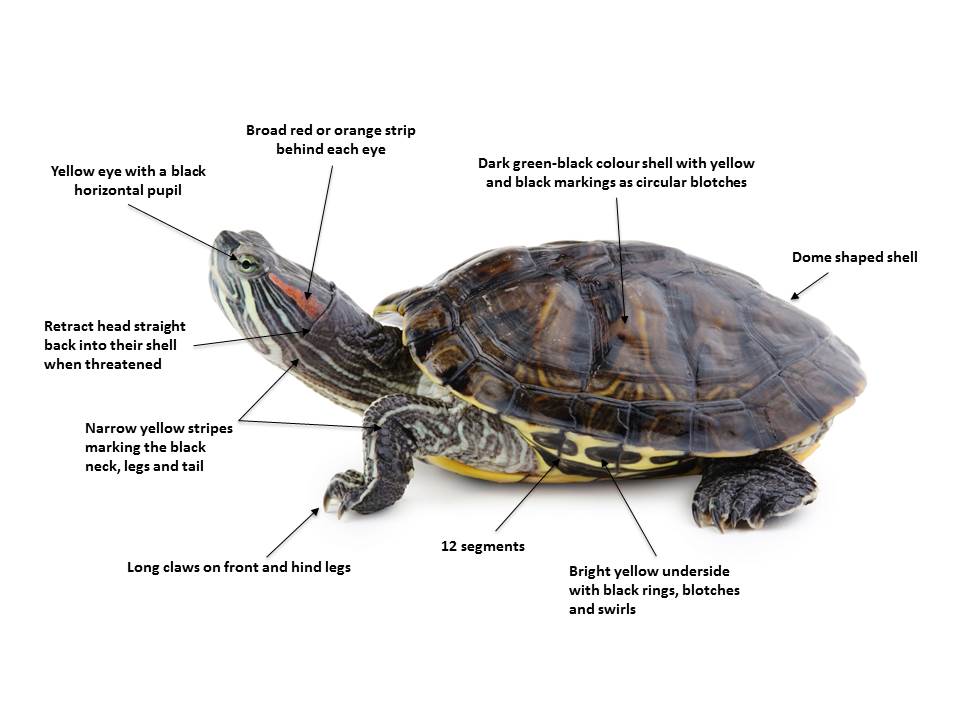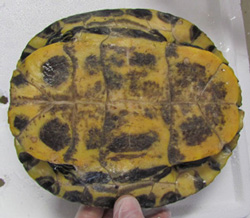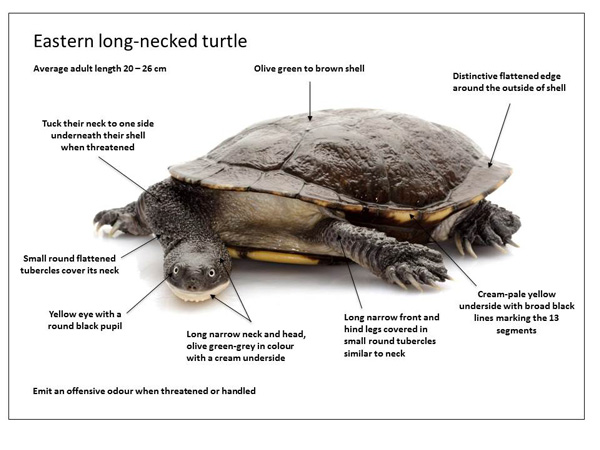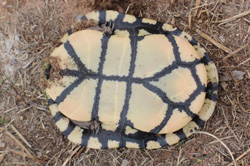Exotic red-eared slider turtle or Australian native turtle?
The exotic red-eared slider turtle poses a serious threat to Victoria's environment. They are a very adaptable and opportunistic invasive animal that competes with native turtles for:
- food
- basking sites
- nesting sites
- suitable habitat.
Red-eared slider turtles are occasionally found in the wild in Victoria so it is essential that all sightings or information on the illegal keeping is reported to our Customer Service Centre on 136 186 or email reports and digital photographs to highrisk.invasiveanimals@agriculture.vic.gov.au
Red-eared slider turtles can be easily confused with native Australian turtles:
- Eastern long-necked (Chelodina longicollis)
- Murray river short-necked (Emydura macquarii).
There are however some distinct differences. Before making your report check the features of the turtle and compare the prominent identification characteristics that set native Australian turtles apart from the exotic red-eared slider turtle.
If still in doubt, email photographs to highrisk.invasiveanimals@agriculture.vic.gov.au with details of the animal sighting or use the Report it now! link and a member of staff will contact you.
Red-eared slider turtle

Characteristics of the red-eared slider turtle include:
- average adult length is 12.5 to 28 cm
- yellow eyes with a black horizontal pupil
- broad red or orange strip behind each eye
- dark green-black colour shell with yellow and black markings as circular blotches
- dome shaped shell
- shell edges point in a downward direction
- bright yellow underside with black rings, blotches and swirls
- 12 segments
- long claws on front and hind legs
- narrow yellow stripes marking the black neck, legs and tail
- retracts head straight back into their shell when threatened.

Red-eared slider turtles retract their head straight back into their shell

The underside of the red-eared slider turtle is bright yellow with black rings, blotches and swirls marking each of the 12 segments.
Eastern long-necked turtle

Characteristics of the native eastern long-necked turtle include:
- average adult 20 to 26cm length
- tucks its neck to one side underneath it's shell when threatened
- olive green to brown shell
- distinctive flattened edge around the outside of shell
- cream-pale yellow underside with broad black lines marking the 13 segments
- long narrow front and hind legs covered in small round tubercles similar to neck
- long narrow neck and head, olive green-grey in colour with a cream underside
- yellow eye with a round black pupil
- small round flattened tubercles cover its neck.

Eastern long-necked turtles tuck their neck to one side underneath their shell.

The underside of the Eastern long-necked turtle is cream-pale yellow with broad black lines marking the 13 segments (ii)
Murray River short-necked turtle

Characteristics of the native Murray River short-necked turtle include:
- average adult length 30 to 40 cm
- short, bulky head and neck that is grey in colour
- distinctive single cream-yellow strip marking the head and face from the jaw line
- the topside of their shell is dark grey in colour with a distinctive flattened lip around the outside
- the shell can be stained or covered in green algae or mud
- the underside of their shell is a pale creamy yellow colour with 13 visible segments
- feet are extensively webbed between the toes
- they tuck their neck to one side underneath their shell when threatened.
Image acknowledgement
i) Ian Sutton from Collinsville and Oberon, Australia [CC BY 2.0 (http://creativecommons.org/licenses/by/2.0)], via Wikimedia Commons
ii) Arthur Chapman [CC BY 2.0 (http://creativecommons.org/licenses/by/2.0)]
iii) OzinOH [CC BY 2.0 (http://creativecommons.org/licenses/by/2.0)]